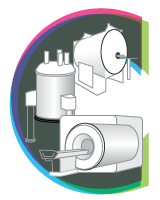Upcoming
There are currently no upcoming events.
Past
“Parahydrogen Enhanced Magnetic Resonance - a tale of spin physics, materials and catalysis”
Date:15
Thursday
June
2023
Lecture / Seminar
Time: 00:00
Location: Gerhard M.J. Schmidt Lecture Hall
Lecturer: Dr. Stefan Glogger
Organizer: Clore Institute for High-Field Magnetic Resonance Imaging and Spectroscopy
Contact: ana.naamat@weizmann.ac.il
Abstract:
Catalysts are essential in increasing reaction rates of chemical reactions. Th ... Read more
Non-invasive Methods for Extracting Microstructural Information from Human Tissues: Implementation in a Clinical MRI Scanner
Date:18
Thursday
May
2023
Lecture / Seminar
Time: 09:30-10:30
Location: Gerhard M.J. Schmidt Lecture Hall
Lecturer: Dr Analía Zwick
Organizer: Clore Institute for High-Field Magnetic Resonance Imaging and Spectroscopy
Contact: ana.naamat@weizmann.ac.il
Abstract: Extracting quantitative information about tissue microstructure using non-invasi ... Read more
3D quantitative-amplified Magnetic Resonance Imaging (3D q-aMRI)
Date:02
Sunday
April
2023
Lecture / Seminar
Time: 16:30-17:30
Location: Perlman Chemical Sciences Building
Lecturer: Itamar Terem
Organizer: Clore Institute for High-Field Magnetic Resonance Imaging and Spectroscopy
Contact: ana.naamat@weizmann.ac.il
Abstract: Changes in blood vessel pulsation and cerebrospinal fluid dynamics cause cyclic ... Read more
Biological Magnetic Resonance - From molecules to patients
Date:26
Sunday
March
2023
-
27
Monday
March
2023
Conference
Time: 08:00
Location: The David Lopatie Conference Centre
Organizer: Clore Institute for High-Field Magnetic Resonance Imaging and Spectroscopy
Contact: lucio.frydman@weizmann.ac.il
Spatiotemporal Resolution of Conformational Changes in Biomolecules by Pulsed Electron-Electron Double Resonance Spectroscopy
Date:09
Thursday
March
2023
Lecture / Seminar
Time: 09:30-10:30
Location: Gerhard M.J. Schmidt Lecture Hall
Lecturer: Dr. Tobias Hett
Organizer: Clore Institute for High-Field Magnetic Resonance Imaging and Spectroscopy
Contact: ana.naamat@weizmann.ac.il
Abstract: Proteins are highly dynamic biomolecules that can undergo ligand-induced
confor ... Read more
Reverse-engineering deep neural networks
Date:19
Thursday
January
2023
Lecture / Seminar
Time: 09:30-10:30
Location: Perlman Chemical Sciences Building
Lecturer: Prof. Ilya Kuprov
Organizer: Clore Institute for High-Field Magnetic Resonance Imaging and Spectroscopy
Contact: ananaamat@gmail.com
Abstract: The lack of interpretability is a much-criticised feature of deep neural network ... Read more
“Functional MRI Advances at the Nexus of Acquisition, Processing, and Neuroscience”
Date:12
Thursday
January
2023
Lecture / Seminar
Time: 09:30-10:30
Location: Gerhard M.J. Schmidt Lecture Hall
Lecturer: Prof. Peter Bandettini
Organizer: Clore Institute for High-Field Magnetic Resonance Imaging and Spectroscopy
Contact: ana.naamat@weizmann.ac.il
Abstract: MRI is truly unique in that contrast and acquisition can be manipulated to highl ... Read more

